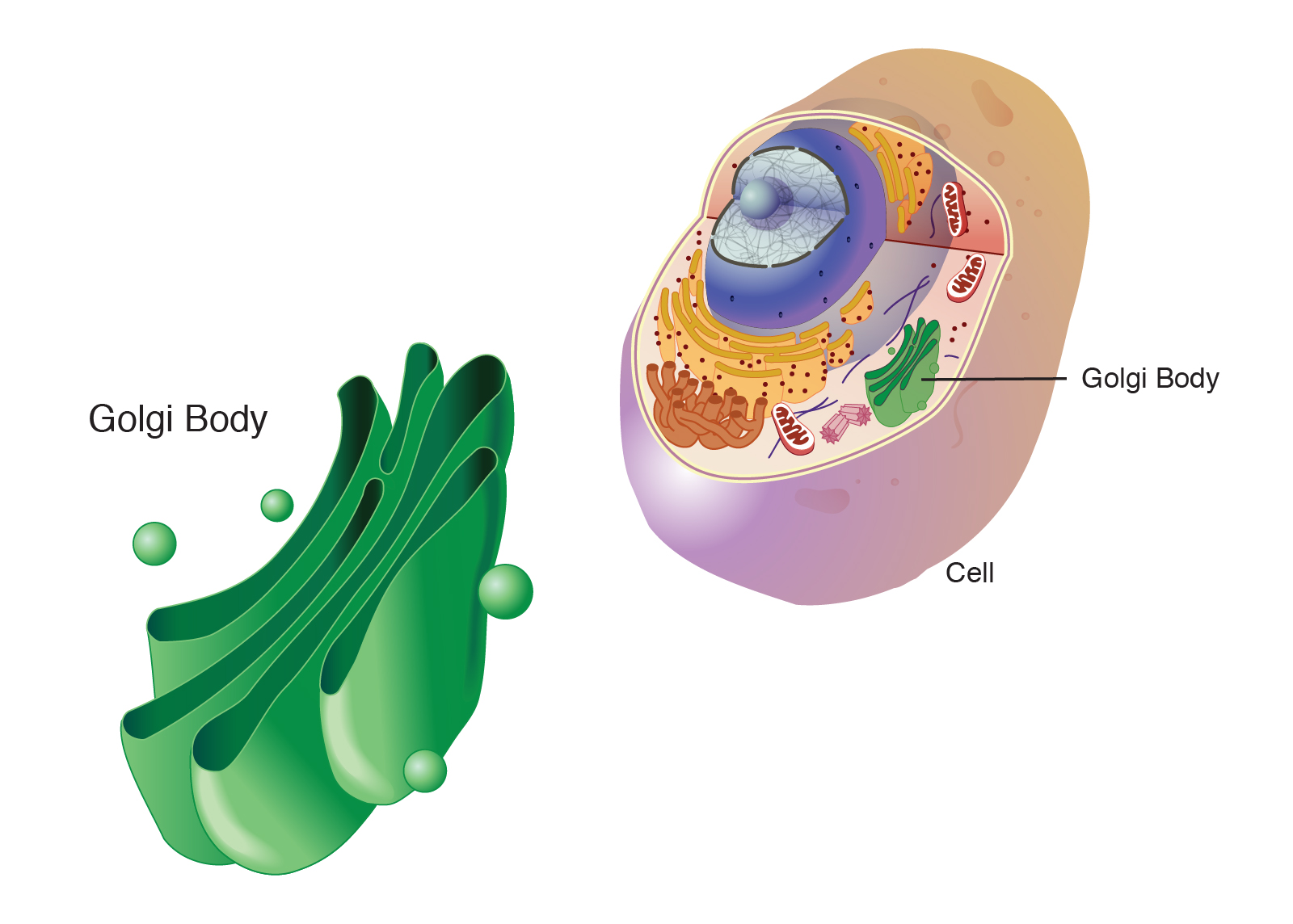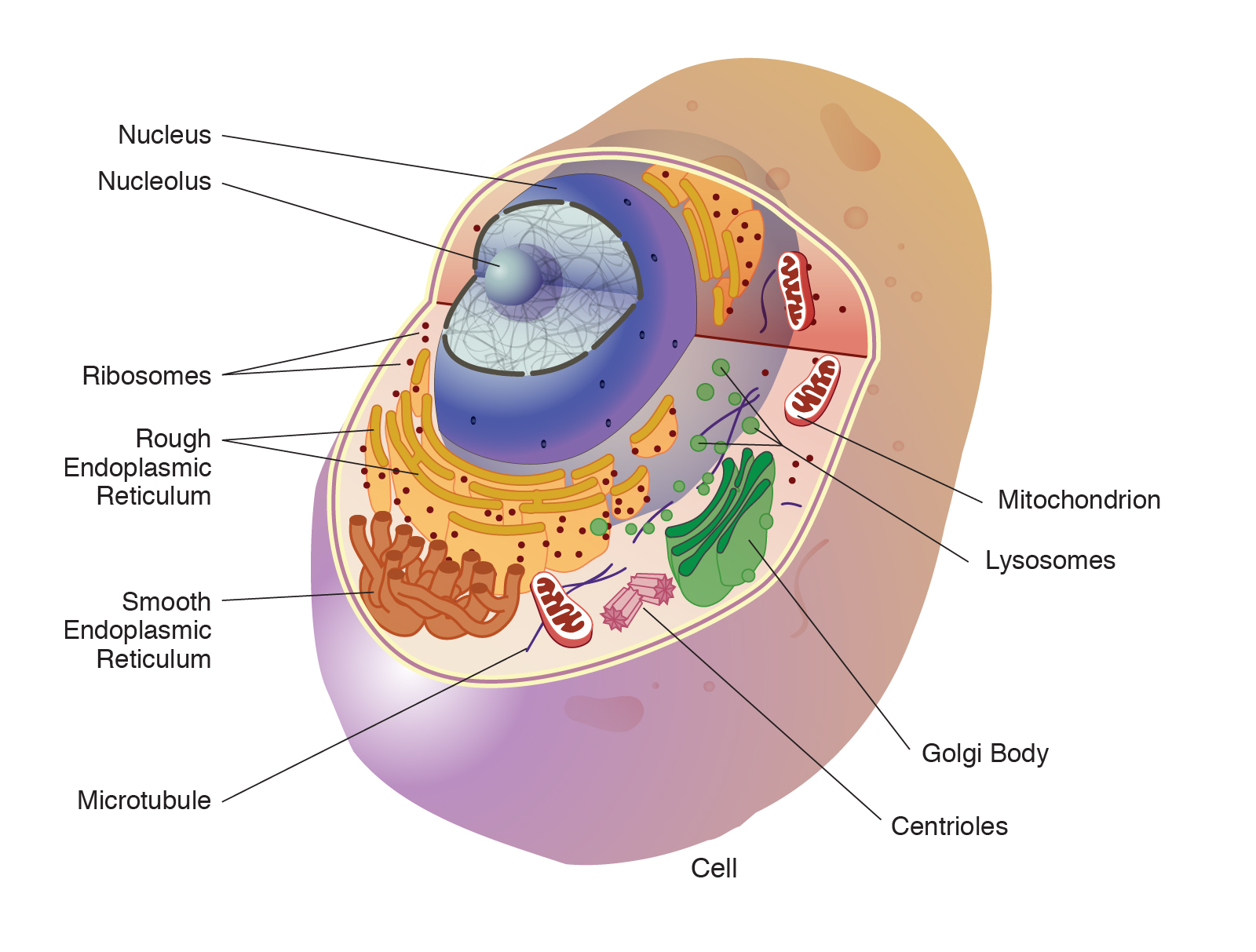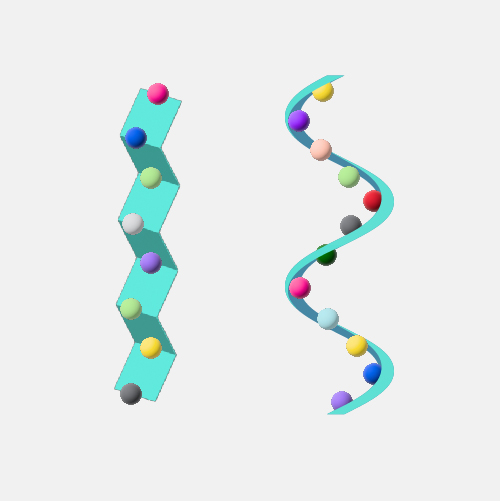Golgi Body
Definition
A Golgi body, also known as a Golgi apparatus, is a cell organelle that helps process and package proteins and lipid molecules, especially proteins destined to be exported from the cell. Named after its discoverer, Camillo Golgi, the Golgi body appears as a series of stacked membranes.

Narration
The Golgi body is a portion of the cell that's made up of membranes, and there's different types of membranes. Some of them are tubules, and some of them are vesicles. The Golgi is located right near the nucleus. It's called a perinuclear body, and it's actually right near the endoplasmic reticulum as well. And when proteins come out of the endoplasmic reticulum, they go into the Golgi for further processing. For example, carbohydrates are put on some of the proteins, and then afterwards these glycoproteins--meaning they have carbohydrate as well as protein on them, these glycoproteins move out of the Golgi to the rest of the cell. And they do so inside other vesicles. Those vesicles are actually made from the Golgi network. In fact, one of the functions of the Golgi is to make new vesicles out of the existing membrane of the Golgi and put into those vesicles the glycoproteins and other substances that are made in the Golgi network. And then those vesicles, filled with the Golgi products, move to the rest of the cell, usually through the cell to the plasma membrane, which is their end destination.


